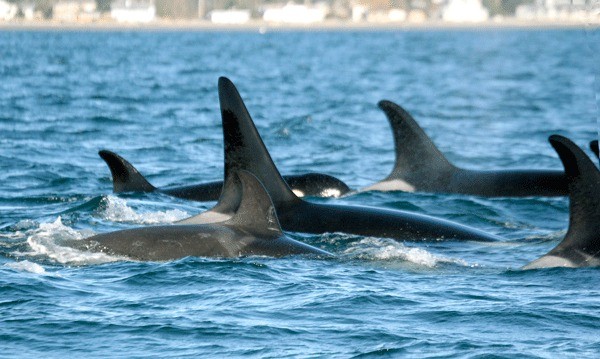Whidbey environmental groups are ramping up for their last charge at the U.S. Navy’s proposal to increase operations in its Northwest Training Range Complex.
The massive area that encompasses 122,400 nautical miles of air, surface and subsurface space in Western Washington, Oregon and Northern California has been in existence since World War II. The Navy’s is hoping to increase its current operations in the training range to include a multitude of new activities from the testing of new aircraft and guided missile submarines to the development of an underwater minefield.
But the plan has environmental activists concerned it could have adverse impacts on marine life. The proposed sonar testing could be particularly harmful to cetaceans — whales and dolphins — but could hurt almost everything alive in the ocean, according to Howard Garrett, president of the Whidbey-based Orca Network’s board of directors.
“Anything with an air pocket in their bodies,” Garrett said. “That’s everything.”
Work on an environmental impact statement, a review document required by the National Environmental Policy Act, has been ongoing since 2007. The document, which is more than 1,000 pages long and stands nearly one-foot tall, according to Navy Environmental Public Affairs Officer Sheila Murray, is now complete.
A required final 30-day comment period began Sept. 10. The public has until Oct. 12 to voice their opinions on the plan before it goes before the assistant secretary of the Navy for a decision, Murray said.
“This is one last chance for the public to look at it,” she said.
Environmentalist groups are not planning to waste the opportunity. Both Garrett and activists from Whidbey Environmental Action Network, or WEAN, have been opposed to the Navy’s plans since their inception and are preparing for one last ditch effort to convince the Navy’s top brass that the plan could have serious impacts on marine life.
The Navy is proposing two alternatives for their plan. Option one would be to increase existing activities to include the test of new weapons platforms, such as aircraft and guided missile submarines, while option two would adopt the same activities but also ramp up existing operations and make range enhancements, from the development of a small scale underwater training minefield and a portable undersea tracking range.
If option two were selected, the Navy’s preferred alternative, several existing activities would increase dramatically. Missile testing would soar by 470 percent, from 10 fired per year to 57, while bomb dropping would also increase 33 percent, from 108 to 144 per year.
The Navy would also roughly double the number of shells it shoots, from 25,856 per year to 53,343. The first draft of the environmental impact statement said some of the shells would be made from depleted uranium, but the navy abandoned those plans after receiving negative feedback from the public.
None of the above activities will take place in Puget Sound.
“The majority of it is off the coast,” Murray said.
Changes due
on Whidbey
While some activities inland will increase, such as air combat maneuvers and demolition training at the range on Whidbey Island’s Seaplane Base, proposed underwater activities will actually decrease in Puget Sound. Explosive ordnance testing conducted in Crescent Harbor will go from 53 explosions a year to just two.
Opposition to the Navy’s proposal is not just centered solely on Whidbey, but throughout Washington and Oregon. Groups such as People for Puget Sound and Cascadia Research have all voiced concerns. At one point, six of Oregon’s seven member Congressional delegation got involved when it sent a petition to Navy Secretary Donald Winter requesting additional time for comments.
Garrett said he believes the Navy is trying to protect the environment, going as far as conducting fly-overs and setting up watchers before performing potentially lethal sonar testing, but he doubts they truly have the ability to detect all underwater marine mammals.
Orcas along the continental shelf, known as “off shores,” are by nature stealthy hunters. They won’t be making noise so it will be extremely difficult for the Navy to know whether they are there before beginning testing.
“They traverse the entire Pacific Ocean, so they can be anywhere,” Garrett said.
Both he and WEAN officials plan to weigh in one last time with public comments, but they said after three years and thousands of comments received by people and groups across two states, they doubt it will have much of an impact.
“I feel like a flea facing an elephant,” said WEAN’s Marianne Edain, a Langley resident. “I seriously doubt they will rethink their whole program.”
Comments can be mailed attention Kimberly Kler, Naval Facilities Engineering Command Northwest, 1101 Tautog Circle, Suite 203, Silverdale, WA 98315-1101. They can also be made online at www.nwtrangecomplexeis.com.



